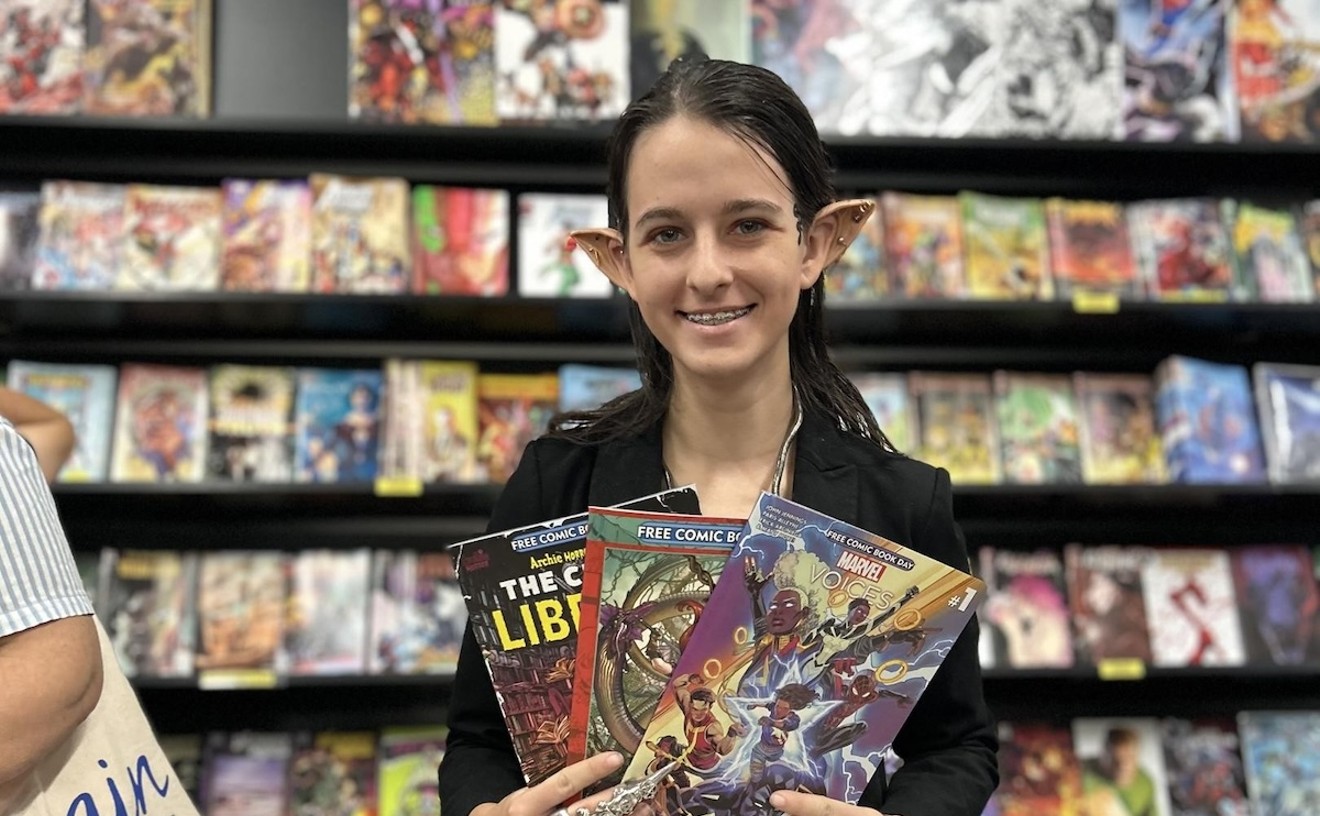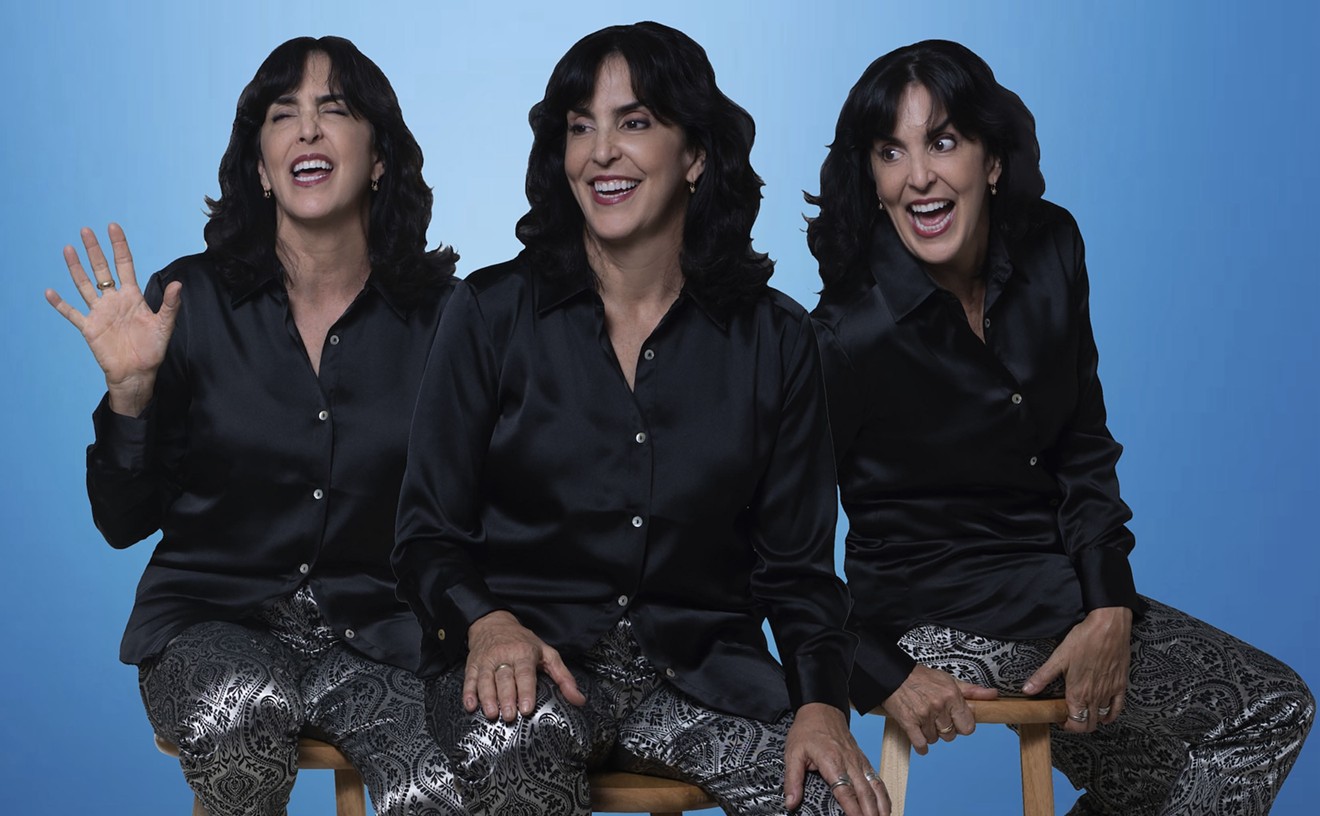The stories you are about to read are true. The names have not been changed to protect the innocent, except one. The Historical Museum of Southern Florida recently ditched its stodgy moniker for the new handle History Miami.
That change might have been inspired by "Crime Miami," the hardboiled exhibit chronicling a multitude of the Magic City's most notorious miscreants now on display there. Some villains profiled here also altered their identities before vanishing into the Witness Protection Program after fingering fellow felons.
The museum cast a dragnet wide and far for this provocative show, which illustrates the century-long battle over the city's soul between lawmen and the notorious miscreants they hunt. On display are photographs, artifacts, and documents from the institution's archives along with materials from the Miami-Dade Police Department, the County Clerk of Courts, and the Florida Department of Corrections.
On view you'll find everything from Prohibition-era rumrunners to victims of the bloody drug wars of the 1980s; there are political assassins such as Giuseppe Zangara, serial killers such as Ted Bundy, infamous gangsters such as Al Capone, high-profile child kidnappers, and many others. There are violent exile groups such as Alpha 66 and Omega 7 and a spate of other memorable scoundrels and misdeeds that have permanently marked South Florida.
The show also includes a series of interactive exhibits where visitors can test their sleuthing skills and examine blood spatter patterns under the light of a crime scene or test their fingerprinting skills. They can also discover the mysteries of DNA evidence and learn about ballistics at a mock crime lab.
Then there's a replica of an old-fangled jail cell boasting a collection of lethal shanks confiscated by corrections bulls. Too violent? Indulge in a perp walk and have your mug shot taken and later displayed on the museum's bulletin board of shame. The snaps will appear across from the plastered pusses of Capone and Zangara and not far from the wanted posters of John Dillinger, Baby Face Nelson, and Bugsy Siegel, all of whom haunted the Big Mango in their day.
Conspicuously absent is the conga line of corrupt politicos who have made our town their home. No true survey of criminal activity in the region is complete without a rogues' gallery of elected scumbags who have been criminally indicted on charges ranging from bribery to extortion. The kickbacks, voter fraud, narcotics possession, grand theft, and other offenses should have been detailed here.
Mentioned nowhere, for example, is former Dade County Commissioner James Burke, an influential weasel who earned a 27-month stretch in the clink after he was caught on tape accepting a $5,000 bribe while exclaiming, "This is a wonderful country," during Operation Greenpalm, a full-scale federal blitz to weed out sleaze in local government.
Or how about those other denizens of county hall, just a stone's toss from the museum, whose crooked footsteps still echo in the building across Flagler Street? Don't forget jingle-brained county commish Joe Gersten, who conducted public business in the pokey while awaiting trial on charges he smoked crack with a hooker on Biscayne Boulevard while he was clad only in skivvies. Or his commission colleague, Larry Hawkins, who was run out of office after sexually harassing his aides. Or Miriam Alonso, who was indicted for money laundering and grand theft, charged with 62 felony counts, and then released early from jail after a plea deal. These cases and more recent ones give Miami the fetid reek of Daley's Chicago or Tammany's New York.
One can only wonder if museum honchos avoided the issue in fear of funding cuts.
Instead, you'll find a much safer Plexiglas vitrine under an obligatory picture of Capone, who lived on Palm Island at the time, in the section devoted to the Prohibition era. There's even a subpoena to Southern Bell requesting the iconic hood's phone records. It's dated April 10, 1930, and signed by E. B. Leatherman, then clerk of the circuit court. Next to the document is a menacing .45-caliber pistol sporting a barrel the length of a toilet plunger.
In the same section, a sepia-tinged photo dated January 23, 1922, depicts the county sheriff posing like a hayseed in the jail yard with a batch of contraband hooch swaddled in burlap. It's oddly reminiscent of the square groupers that later sometimes turned up floating in the bay or smuggled by pot peddlers.
A display on the other side of the gallery showcases the legendary Black Tuna Gang, which was responsible for bringing up to 3 million pounds of high-grade Colombian pot into South Florida during the 1970s. On an adjacent wall, a picture of a Coast Guard cutter taken August 19, 1975, shows the boat groaning sluggishly while carrying 80 tons of dope seized on the way to Miami from the Bahamas.
One of the more striking artifacts is an impression of Ted Bundy's snaggled choppers taken by Coral Gables dentist Richard Souviron. It matched the bite mark left on Lisa Levy during the killer's Chi Omega rampage and was used as evidence to send him to the electric chair.
Another intriguing arrangement is the evidence documenting the Jacques Mossler murder, one of the most salacious cases in South Florida's criminal annals. On the steamy night of Monday, June 29, 1964, detectives were called to the plush Key Biscayne condo of the victim, who had been stabbed more than 30 times. A photo of the gory crime scene shows Mossler lying on the floor covered with a bed sheet under a swank swag lamp. His socialite wife, Candy, was charged along with her lover and nephew, Melvin Powers, for the murder of her millionaire husband.
The ensuing trial, at which the pair was represented by Percy Foreman, the high-profile mouthpiece who defended James Earl Ray, brought the national press scrambling to Miami. It ended in a not-guilty verdict for the defendants.
Candy, who proved crime can pay — and pay huge after inheriting most of her husband's $33 million estate — later overdosed on drugs in her penthouse suite at the Fontainebleau in Miami Beach in 1976.
At the museum's entrance, one can also catch "Illustrating Justice: The Courtroom Art of Shirley Henderson," featuring more than 60 of the talented local artist's vibrant pastel drawings of South Florida legal dramas. They include renditions of the Manuel Noriega, Willy Falcon, Sal Magluta, Elián González, and "Dirty Bomber" José Padilla trials. Look out for disgraced former Hialeah and Miami Beach mayors Raul Martinez and Alex Daoud.
On Thursday, May 20, at 6:30 p.m., the museum will present a panel discussion, CSI & Forensics, which will include Jorge Molina and Samantha Steinberg, forensics artists from the Miami Dade Police Department.










